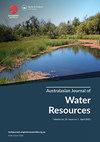恢复圣水遗址的文化植物群落
IF 2.2
Q2 WATER RESOURCES
引用次数: 2
摘要
摘要数千年来,水源地对澳大利亚中部土著人民至关重要。然而,许多水坑群落由于大型野生食草动物和非本土植物的入侵等因素而退化。我们记录了Santa Teresa(Ltyentye Apurte)附近两个水坑的修复情况,重点关注具有文化意义的植物。我们在2007年描述了水坑周围的植物群落,当时还没有竖起围栏来排斥大型野生动物,2018年又一次。围栏后的植物覆盖率和多样性更高,具有文化意义的植物的出现大大增加。然而,入侵水牛草是围栏后的主要地面覆盖物,需要积极抑制才能使具有文化意义的本地植物繁殖。传统所有者发现了通过教育年轻人实现恢复的绝佳机会,重点是分享代际知识和让当地土著护林员参与管理,使他们能够履行照顾国家的传统义务。本文章由计算机程序翻译,如有差异,请以英文原文为准。
Restoring cultural plant communities at sacred water sites
ABSTRACT Water places have been critical to central Australian Indigenous peoples for thousands of years. However, many waterhole communities have been degraded by factors including invasion by large feral herbivores and non-native plants. We document the restoration of two waterholes near Santa Teresa (Ltyentye Apurte), with a focus on culturally significant plants. We described plant communities around waterholes in 2007, before fences were erected to exclude large feral animals, and again in 2018. Plant cover and diversity were higher after fencing and the occurrence of culturally significant plants greatly increased. However, invasive buffel grass was the dominant ground cover after fencing and will require active suppression to allow culturally significant native plants to proliferate. Traditional Owners identified excellent opportunities to achieve restoration through educating young people, with a focus on sharing intergenerational knowledge and engaging local Indigenous rangers in management, enabling them to meet the traditional obligations to care for country.
求助全文
通过发布文献求助,成功后即可免费获取论文全文。
去求助
来源期刊

Australasian Journal of Water Resources
WATER RESOURCES-
CiteScore
5.10
自引率
21.90%
发文量
25
期刊介绍:
The Australasian Journal of Water Resources ( AJWR) is a multi-disciplinary regional journal dedicated to scholarship, professional practice and discussion on water resources planning, management and policy. Its primary geographic focus is on Australia, New Zealand and the Pacific Islands. Papers from outside this region will also be welcomed if they contribute to an understanding of water resources issues in the region. Such contributions could be due to innovations applicable to the Australasian water community, or where clear linkages between studies in other parts of the world are linked to important issues or water planning, management, development and policy challenges in Australasia. These could include papers on global issues where Australasian impacts are clearly identified.
 求助内容:
求助内容: 应助结果提醒方式:
应助结果提醒方式:


